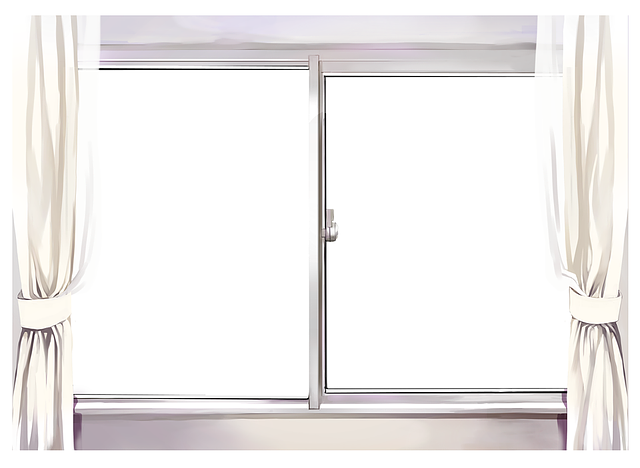In an environmentally conscious era, the demand for eco-friendly heating and cooling systems is high due to traditional HVAC's significant energy consumption and greenhouse gas emissions. Adopting water-saving home fixtures like low-flow showerheads and smart thermostats reduces reliance on fossil fuels, preserves natural resources, offers cost-effective solutions, and minimizes a home's carbon footprint. These water-efficient fixtures also drastically cut household water usage, providing long-term financial benefits while contributing to global conservation efforts.
In today’s digital era, the global shift towards eco-friendly living demands innovative solutions in heating and cooling. The need for sustainable practices is more pressing than ever, given the significant environmental impact of traditional HVAC systems, contributing heavily to carbon footprints. This article explores comprehensive strategies to reduce your home’s ecological footprint, focusing on water-saving home fixtures as a key component alongside cutting-edge technologies and design best practices for eco-friendly spaces. Discover how these solutions not only benefit the planet but also enhance comfort and efficiency.
The Need for Eco-Friendly Heating and Cooling
In today’s world, where environmental consciousness is at an all-time high, the need for eco-friendly heating and cooling solutions has never been more pressing. Traditional HVAC systems contribute significantly to energy consumption and greenhouse gas emissions, making it crucial to explore alternative options that are both sustainable and cost-effective. With global efforts to reduce carbon footprints, transitioning to greener methods of temperature control is not just an option but a necessity.
Eco-friendly heating and cooling involve adopting technologies and practices that minimize the environmental impact. This shift includes incorporating water-saving home fixtures and energy-efficient systems that reduce reliance on fossil fuels. By opting for sustainable solutions, homeowners can contribute to preserving natural resources while enjoying comfortable living environments.
– Global impact of traditional HVAC systems
The global impact of traditional heating, ventilation, and air conditioning (HVAC) systems is a significant concern due to their substantial energy consumption and associated environmental effects. These systems are known for high energy usage, contributing to increased greenhouse gas emissions and strain on global resources. In today’s eco-conscious world, the demand for sustainable alternatives has never been higher.
One of the primary challenges posed by traditional HVAC is water waste. Many older or inefficient units consume large amounts of water for cooling and heating processes, adding stress to local water supplies. Incorporating water-saving home fixtures, such as low-flow showerheads and smart thermostats, can significantly mitigate these issues. By adopting eco-friendly solutions, homeowners not only reduce their environmental footprint but also enjoy lower energy bills, making the switch a beneficial choice for both the planet and personal finances.
– Importance of reducing carbon footprint in homes
Reducing a home’s carbon footprint is an essential step in mitigating climate change, and it starts with efficient heating and cooling systems. Traditional methods often rely on fossil fuels, contributing significantly to greenhouse gas emissions. Eco-friendly alternatives, such as heat pumps and smart thermostats, offer a more sustainable approach. These technologies not only reduce energy consumption but also have the potential to lower utility bills for homeowners.
Water-saving home fixtures are another crucial component in this equation. By installing low-flow showerheads and faucets, families can cut down on their water usage without compromising comfort. This simple step can lead to substantial savings over time, further reducing the overall environmental impact of household activities.
Water-Saving Home Fixtures: A Key Component
Water-saving home fixtures play a pivotal role in any eco-friendly heating and cooling system. These innovative solutions, such as low-flow showerheads and water-efficient toilets, significantly reduce household water consumption without compromising on performance. By incorporating these fixtures, homeowners can contribute to the global conservation efforts while enjoying lower water bills.
Beyond their environmental benefits, water-saving home fixtures offer long-term financial advantages. They are designed to use less water per unit of flow, ensuring that even during peak usage times, the overall demand for water remains manageable. This not only eases pressure on local water supplies but also translates into substantial savings for homeowners over time.
In conclusion, adopting eco-friendly heating and cooling solutions, coupled with the integration of water-saving home fixtures, is not just a trend but a necessity. The global impact of traditional HVAC systems on the environment is undeniable, making it imperative for homeowners to reduce their carbon footprint. By embracing innovative, sustainable technologies and incorporating water-efficient fixtures, we can create more environmentally conscious homes while potentially saving on energy costs. This shift towards eco-friendliness is not just beneficial for our planet but also a smart, long-term investment for any homeowner.
